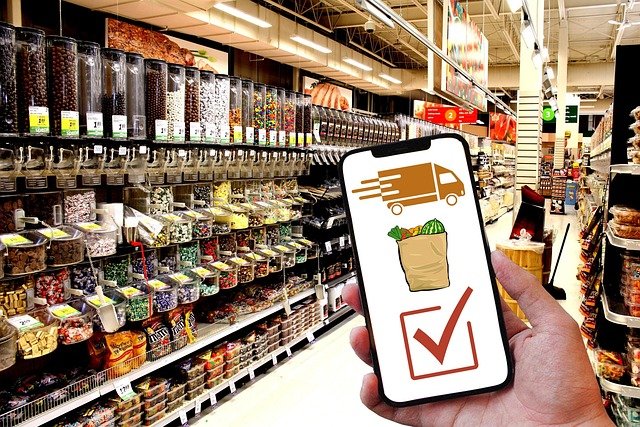Improving Product Discovery for Global Online Buyers
Effective product discovery combines design, data, and localized options to help global buyers find relevant items quickly. This article outlines practical approaches—from personalization and mobile UX to payments and crossborder logistics—that improve discovery and influence conversion and retention.

Improving product discovery for a global audience requires a coordinated approach across product presentation, search, and post-search touchpoints. Buyers from different countries have varied expectations around language, payments, and delivery; aligning site structure, personalization, and measurement helps reduce friction and increase engagement. This article explains actionable techniques that connect ecommerce UX with analytics, inventory management, and marketing tactics to make items easier to find and more likely to convert.
How can personalization and segmentation aid discovery?
Personalization and segmentation let retailers surface relevant products based on behavior, demographics, and past purchases. Use segmentation to group users by intent—browsers, repeat buyers, or price-sensitive shoppers—and apply tailored recommendations, curated landing pages, or targeted banners. Personalization engines that combine collaborative filtering and content-based signals improve product discovery without being intrusive. Maintain privacy and clear tracking consent while using anonymized metrics to refine models. When done correctly, personalization increases engagement, shortens search paths, and supports higher conversion rates by highlighting what matters most to each segment.
How does UX and mobile design affect engagement?
User experience (UX) and mobile design are central to discovery: responsive layouts, fast load times, and clear visual hierarchy reduce cognitive load. Mobile-first flows should optimize search bars, filters, and a simplified cart path to keep interaction costs low. Include progressive disclosure for product details and quick-add options so buyers can evaluate and move forward without leaving browsing contexts. Microinteractions and visual cues guide attention to promotions or relevant categories, boosting metrics like time on page and product views per session. Prioritize accessibility and consistent patterns to lower abandonment during exploration.
What role do analytics, metrics, and tracking play?
Analytics and tracking reveal where discovery fails and which touchpoints drive conversion. Instrument search queries, filter usage, product impressions, add-to-cart events, and checkout funnels to build a clear funnel. Key metrics include search-to-conversion rate, product view-to-cart rate, and average time to purchase. A/B testing variants of search ranking, faceted navigation, and recommendation placements helps identify high-impact changes. Respect privacy regulations when collecting data, provide opt-outs, and prefer aggregated signals where possible to balance measurement fidelity with user trust.
How can localization, inventory, and crossborder factors improve relevance?
Localization goes beyond translations: adapt content to local currencies, sizing conventions, taxes, and shipping estimates. Show country-specific inventory availability and delivery timelines to set accurate expectations. For crossborder commerce, clearly indicate customs, duties, and return policies to reduce surprise at checkout. Synchronize inventory across regions to avoid displaying out-of-stock items to buyers who cannot receive them, and use geo-targeted merchandising to surface items that are popular or readily shippable to each market. Partnering with local services for fulfillment can shorten delivery windows and improve confidence.
How should cart, checkout, and payments be optimized?
A streamlined cart and checkout minimize friction at the final discovery-to-purchase moment. Offer saved carts, guest checkout, and clear progress indicators to reduce abandonment. Integrate diverse payment methods relevant to markets—local wallets, installment options, and popular card networks—to lower payment-related drop-offs. Present shipping costs and estimated delivery before the final step to prevent late-stage surprises. Track cart abandonment and follow up with contextual retargeting or reminders that preserve the shopper’s context and selections.
How do retargeting, A/B testing, and retention support ongoing discovery?
Retargeting reconnects shoppers with products they viewed but didn’t purchase; use dynamic ads or emails that show the exact items, suggest alternatives, or offer incentives tailored to the segment. A/B testing should validate retargeting creatives, recommendation logic, and on-site placements to improve click-through and conversion. Retention strategies—such as personalized re-engagement campaigns, loyalty benefits, and curated collections—keep buyers returning and broaden discovery through repeat interactions. Monitor retention-related metrics to ensure retargeting investments improve lifetime value rather than only short-term conversion spikes.
This wrap-up emphasizes that improving product discovery for global online buyers is an iterative blend of design, data, and operational clarity. Combine thoughtful personalization, mobile-optimized UX, reliable analytics, localized inventory visibility, and smooth payments to reduce friction across the buyer journey. Maintaining privacy-compliant tracking and continual testing creates measurable improvements in engagement, conversion, and retention without sacrificing user trust.





